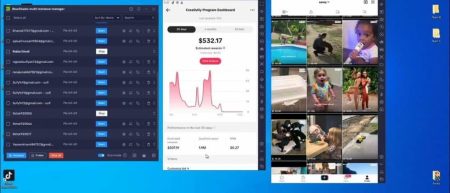-
Research Scholarships Opportunities:
When searching for scholarship opportunities to study abroad, it’s crucial to conduct thorough research and explore various avenues. Start by visiting the websites of universities and educational institutions in your desired destination, as many of them offer scholarships and financial aid programs for international students. Additionally, consider the following sources for scholarship opportunities:
- Government Scholarships: Many countries and governments provide scholarships to attract international students. For instance, the Fulbright Program in the United States or the evening Scholarships in the UK.
- International Organizations: Organizations like the United Nations, the World Bank, and the European Union offer scholarships and fellowships for students from around the world.
- Private Foundations and NGOs: Numerous private organizations and non-governmental organizations offer scholarships for international students pursuing specific fields or causes.
- Corporate Scholarships: Some multinational corporations provide scholarships for students from certain countries or for specific study programs.
- Online Scholarship Databases: Websites like Scholarship.com, Fast web, and the Scholarship Portal offer extensive databases of scholarships available to international students.
- Country-Specific Scholarships: Some countries offer scholarships specifically for students from certain regions or countries, so explore scholarships available to your nationality.
- Institution-Specific Scholarships: Many universities have their own scholarship programs for international students, so check individual university websites for details.
Conducting thorough research on these sources, being aware of deadlines, and tailoring your applications to meet specific criteria will increase your chances of securing financial aid for your study abroad journey. It’s important to start your search well in advance to maximize your opportunities for funding your education abroad.
- Eligibility Check:
Eligibility checks are a critical initial step when applying for scholarships to study abroad. These checks involve carefully reviewing the specific criteria and requirements outlined by scholarship providers to determine if you qualify. Eligibility criteria can vary widely depending on the scholarship, but common factors often include academic merit, nationality, field of study, financial need, language proficiency, and extracurricular activities.

To perform an eligibility check:
- Review the Requirements: Carefully read through the scholarship’s application guidelines and eligibility criteria provided on the scholarship provider’s website or application materials.
- Assess Your Qualifications: Compare your academic achievements, background, and personal circumstances against the outlined criteria. Ensure that you meet the minimum requirements.
- Gather Necessary Documents: Prepare the required documentation, such as academic transcripts, recommendation letters, and proof of financial need, to support your eligibility.
- Consider Alternative Scholarships: If you don’t meet the criteria for a specific scholarship, look for other opportunities that better align with your qualifications.
Performing a thorough eligibility check helps you save time and focus your efforts on scholarships where you have a higher likelihood of success. It’s essential to be honest and accurate when assessing your eligibility, as misrepresentation can lead to disqualification from the scholarship selection process.
- Identify Deadlines:
Identifying and adhering to scholarship application deadlines is of paramount importance when seeking financial aid for your study abroad journey. Scholarship deadlines vary significantly depending on the provider, country, and the specific scholarship program. To ensure you don’t miss out on valuable opportunities, follow these steps:

- Research Thoroughly: Begin your scholarship search well in advance and gather detailed information about each scholarship’s application timeline. Most scholarships have annual or semi-annual deadlines.
- Create a Calendar: Create a calendar or spreadsheet to keep track of all the application deadlines. Include the scholarship name, due date, and any specific requirements.
- Set Reminders: Use alarms, notifications, or email reminders to ensure you stay aware of approaching deadlines.
- Apply Early: To avoid last-minute stress, aim to submit your applications well before the deadline. Many scholarships have limited spots, and early applicants often have a better chance.
- Time Zone Awareness: Keep in mind the time zone of the scholarship provider, as their deadline may be based on a different local time.
- Prepare in Advance: Start preparing your application materials and essays well ahead of time to ensure you meet all requirements.
- Double-Check: Just before submitting, double-check that you have all necessary documents and that your application is complete and error-free.
Missing scholarship deadlines can mean missing out on funding opportunities, so it’s crucial to be organized, proactive, and diligent in tracking and meeting these dates. Planning ahead and staying informed can significantly improve your chances of securing the financial support you need for your study abroad experience.
- Prepare Academic Records:
Preparing your academic records is a vital step in the process of applying for scholarships and admission to study abroad programs. Your academic records are a key component of your application, showcasing your educational qualifications and achievements. To prepare your academic records:
- Transcripts: Obtain official transcripts from your current and previous educational institutions, including high school, undergraduate, or postgraduate studies. Ensure these transcripts include your grades or GPA.
- Standardized Test Scores: If required, provide standardized test scores such as the TOEFL, IELTS, GRE, or GMAT. Ensure that your scores meet the minimum requirements specified by the scholarship or university.
- Certifications and Diplomas: Include copies of any academic certificates, diplomas, or degrees that you’ve earned, along with their translations if not in the language of the host country.
- Translations: If any of your academic documents are not in the official language of your host country, you may need to have them translated into the required language. Ensure the translations are certified and accurate.
- Notarization: Some institutions or scholarship providers may require notarization or apostille of your academic documents to verify their authenticity.
- Digital Copies: Create digital copies or scans of your academic records so that you can easily submit them online as required during the application process.
- Multiple Copies: Prepare multiple copies of your academic records to be ready for different applications or scholarship opportunities.
Remember that maintaining accuracy and authenticity in your academic records is crucial. Always follow the specific guidelines provided by the scholarship provider or educational institution and ensure that your academic records are up to date and complete before submitting them as part of your application.
- Prepare Personal Statements:
Crafting an effective personal statement is a crucial part of your scholarship or study abroad application. Your personal statement provides insight into your academic and personal journey, allowing you to stand out as a strong candidate.

To prepare a compelling personal statement:
- Reflect on Your Goals: Begin by reflecting on your academic and career goals, as well as the impact studying abroad will have on them.
- Tell Your Story: Share your background, experiences, and motivations. Explain what has led you to pursue a scholarship or study abroad opportunity.
- Highlight Achievements: Emphasize your academic and extracurricular achievements, showcasing your qualifications and potential as a scholarship recipient.
- Explain Your Fit: Clearly articulate why you are an ideal candidate for the scholarship or program and how it aligns with your aspirations.
- Address Challenges: If you’ve faced challenges or obstacles, discuss how you’ve overcome them and how they’ve shaped your character and determination.
- Be Concise and Well-Structured: Write a clear, concise statement with an introduction, body, and conclusion. Avoid excessive jargon and keep your language straightforward.
- Proofread and Edit: Carefully proofread for grammar and spelling errors. Seek feedback from peers, mentors, or educators to refine your statement.
- Tailor Each Statement: Customize your personal statement for each scholarship or program to address their specific requirements and objectives.
- Express Passion: Show genuine enthusiasm for your chosen field of study and your desire to make a meaningful impact in the future.
Your personal statement is your opportunity to connect with the selection committee on a personal level and demonstrate why you’re the right fit for the scholarship or study program. Be honest, passionate, and persuasive to leave a lasting impression.
- Letters of Recommendation:
Letters of recommendation play a vital role in scholarship applications, providing insight into your character, abilities, and potential as a scholarship recipient. Here’s how to navigate this aspect of your application:
- Choose Recommenders Wisely: Select individuals who know you well, such as professors, mentors, or employers, and who can speak to your academic and personal qualities.
- Request Recommendations Early: Approach your recommenders well in advance of application deadlines, as they may have busy schedules. Politely ask if they can provide a positive, detailed recommendation.
- Provide Information: Share information about the scholarship, your goals, and your experiences with your recommenders. This can help them tailor their recommendations to align with the scholarship’s criteria.
- Follow Submission Guidelines: Ensure your recommenders submit their letters according to the scholarship provider’s preferred method and deadline.
- Express Gratitude: After receiving recommendations, send a thank-you note to your recommenders, acknowledging their time and effort.
- Provide Reminders: Politely follow up with recommenders as the deadline approaches to ensure they submit their letters on time.
- Diversity of Perspective: Consider having recommenders from different areas of your life to provide a well-rounded view of your qualifications.
Letters of recommendation can significantly influence scholarship decisions, so it’s crucial to choose recommenders who can attest to your strengths and capabilities. Be courteous and organized in your approach to ensure that your recommendations support your scholarship application effectively.
- Financial Documentation:
Financial documentation is a critical component of scholarship applications, particularly for scholarships that consider financial need as a criterion. Here’s how to prepare and present this information effectively:

- Understand Requirements: Familiarize yourself with the specific financial documentation requirements of the scholarship. Different scholarships may require various forms of proof of financial need, such as bank statements, income certificates, or tax documents.
- Gather Documentation: Compile the necessary financial documents, including bank statements, tax returns, or any other proof of income and assets. Ensure that the documents are recent and accurately represent your financial situation.
- Translations: If your financial documents are not in the official language of the scholarship provider, you may need to have them translated into the required language.
- Certify Authenticity: Some scholarships may require notarization or apostille of financial documents to verify their authenticity.
- Explain Financial Need: In your scholarship application, provide a clear, honest, and concise statement explaining your financial situation, any special circumstances, and how the scholarship will alleviate your financial burden.
- Submit on Time: Ensure that you submit your financial documentation along with your application by the specified deadline.
- Seek Assistance: If you have questions or need assistance with your financial documentation, don’t hesitate to reach out to the scholarship provider for guidance.
Clear, accurate, and well-organized financial documentation can strengthen your case for scholarships based on financial need. Be truthful in your representations and ensure that the documentation supports your application and aligns with the scholarship’s criteria.
- Language Proficiency:
Language proficiency is a crucial aspect of studying abroad, as it ensures effective communication and academic success in a foreign language-speaking environment. Here are some key points to consider:
- Language Requirements: Most universities and scholarship programs have language proficiency requirements, typically assessed through exams like TOEFL, IELTS, or equivalent tests. Familiarize yourself with the specific language requirements of your chosen institution or scholarship.
- Prepare in Advance: If you need to improve your language skills, consider enrolling in language courses or programs before your departure. This will help you meet the language requirements and adapt more easily once abroad.
- Language Tests: Register for and take the required language proficiency exams well in advance of application deadlines. Ensure you achieve the necessary scores to meet admission or scholarship criteria.
- Regular Practice: Regular practice, including speaking, reading, writing, and listening, is essential to maintain and improve your language skills.
- Cultural Sensitivity: Language proficiency is not only about vocabulary and grammar but also understanding cultural nuances and contexts. This cultural sensitivity can enhance your overall experience while studying abroad.
- Language Support: Once abroad, take advantage of language support services and resources provided by your host institution to further enhance your language skills.
Language proficiency is often a prerequisite for successful study abroad experiences. Meeting language requirements not only opens doors to educational opportunities but also ensures you can engage with the local culture, make friends, and fully immerse yourself in your new environment.
- Complete the Application Form:
Completing the application form is a crucial step in the process of applying for scholarships, admissions to universities, or study abroad programs. Here’s a guide on how to tackle this task effectively:

- Read Instructions Carefully: Start by thoroughly reading the application instructions provided by the scholarship provider or university. Ensure you understand the requirements and deadlines.
- Prepare Required Documents: Gather all necessary documents, such as transcripts, personal statements, letters of recommendation, and financial documentation. Make sure you have digital and physical copies as needed.
- Accurate and Honest Information: Fill out the application form with accurate and honest information. Be careful with details such as your name, contact information, and academic history.
- Follow Formatting Guidelines: Pay attention to formatting requirements, such as font size, line spacing, and file formats. Complying with these guidelines reflects your attention to detail.
- Proofread and Edit: Carefully review the entire application for errors, typos, or inconsistencies. Seek feedback from peers or mentors to improve the quality of your responses.
- Keep a Copy: Make a copy or save your application before submission to have a backup in case of technical issues.
- Submit Before the Deadline: Submit your application well before the deadline to avoid last-minute rush or technical glitches.
- Confirmation: After submission, look for a confirmation or acknowledgment from the scholarship provider or university to ensure that your application was received.
Completing the application form is your opportunity to present yourself effectively to the selection committee. Paying close attention to detail, following guidelines, and presenting your qualifications accurately can significantly increase your chances of success in securing scholarships or admission to your desired study abroad program.
- Submit All Materials:
Submitting all required materials is a crucial aspect of any scholarship or study abroad application process. To ensure a smooth and successful submission, follow these steps:
- Check the Requirements: Review the application guidelines to understand which documents and materials are needed for your specific scholarship or study program. Common items include transcripts, personal statements, letters of recommendation, and financial documentation.
- Organize Your Materials: Keep your application materials well-organized, and label them according to the application’s instructions. Use clear file names and headings for each document.
- Digital and Physical Copies: Ensure you have both digital and physical copies of your documents, as some applications may require physical submissions or originals.
- Meet Formatting Requirements: Pay attention to formatting guidelines, such as document size, font, and file formats. Adhering to these standards demonstrates your attention to detail.
- Proofread Thoroughly: Review all documents carefully for errors, including spelling, grammar, and content accuracy. Seek feedback from peers or mentors to improve the quality of your materials.
- Submit in a Timely Manner: Submit your materials well before the application deadline to avoid any last-minute technical glitches or issues.
- Confirmation: After submission, look for a confirmation email or receipt from the scholarship provider or university to verify that your materials were received.
- Backup and Store Securely: Make sure to create backups of all your application materials and store them securely, as you may need to reference them during subsequent steps or interviews.
Submitting all materials accurately and on time is essential for a successful application. It reflects your professionalism and commitment, increasing your chances of being considered for scholarships or admission to your desired study abroad program.
- Follow Up:
Following up on your scholarship application can help ensure that your application is processed correctly and that you receive timely updates on its status. Here are some steps to effectively follow up on your scholarship application:
- Record Key Dates: Keep a record of the application deadline, the date you submitted your application, and any expected response timelines mentioned in the application guidelines.
- Confirmation Email: If you receive a confirmation email after submitting your application, save it as proof of submission and note any reference or application numbers provided.
- Contact Information: Locate and save the contact information for the scholarship provider or admissions office, including email addresses and phone numbers.
- Initial Follow-Up: Wait for a reasonable time after the application deadline has passed (based on any mentioned response timelines). Then, send a polite email to the scholarship provider or admissions office inquiring about the status of your application.
- Respect Response Times: Be patient and give the scholarship provider or university time to process applications and respond. Response times may vary depending on the volume of applications they receive.
- Polite and Professional Tone: In your follow-up emails or calls, maintain a polite and professional tone. Express your continued interest in the scholarship or program.
- Check Online Portals: If the scholarship provider or university has an online application portal, regularly log in to check for updates or messages.
- Document Correspondence: Keep a record of all communication, including the date, time, and content of emails or phone calls.
- Additional Information: If the scholarship provider requests further information or documents, promptly provide them.
- Thank You: After receiving a decision, whether positive or negative, send a thank-you email expressing your appreciation for the opportunity to apply or for the offer of a scholarship.
Effective follow-up demonstrates your commitment and interest in the scholarship or study program. Be persistent but respectful, and avoid being overly impatient or demanding in your inquiries.
- Interview (if required):
If you are required to participate in an interview as part of the scholarship selection process, it’s essential to prepare thoroughly to make a positive impression and increase your chances of securing the scholarship. Here are some key steps to follow:
- Review Scholarship Details: Familiarize yourself with the scholarship’s goals, values, and specific criteria, as these will likely guide the interview questions.
- Know Your Application: Be prepared to discuss the contents of your application, including your personal statement, academic achievements, and any other supporting materials.
- Research the Scholarship Provider: Understand the organization or institution offering the scholarship. Know its history, mission, and any recent accomplishments or initiatives.
- Practice Interview Questions: Anticipate common interview questions such as your reasons for applying, your goals, and how the scholarship will impact your studies or future career. Practice your responses to ensure clarity and conciseness.
- Highlight Strengths and Achievements: Be ready to talk about your strengths, experiences, and achievements, including extracurricular activities and community involvement.
- Prepare Questions: Prepare thoughtful questions to ask the interviewers, demonstrating your interest in the scholarship and their organization.
- Professional Appearance and Demeanor: Dress professionally and be punctual for the interview. Show respect and professionalism throughout the process.
- Mock Interviews: Consider conducting mock interviews with friends, family, or mentors to receive constructive feedback and improve your interview skills.
- Stay Calm and Confident: Nervousness is natural, but try to stay calm and confident during the interview. Take a moment to think before answering questions.
- Follow-Up: After the interview, send a thank-you email to the interviewers expressing your gratitude for the opportunity and reaffirming your interest in the scholarship.
Remember that the interview is an opportunity for the scholarship provider to learn more about you and for you to demonstrate your qualifications, passion, and suitability for the scholarship. Be genuine, well-prepared, and confident in your responses to make a favorable impression.
- Acceptance and Notification:
Receiving an acceptance or rejection notification for a scholarship can be a pivotal moment in your academic journey. Here’s how to handle this critical phase:
- Check Communication Methods: Keep a close eye on your email, as most scholarship notifications are sent via email. Ensure that your contact information is accurate and regularly check your spam folder to avoid missing important messages.
- Stay Calm and Patient: While awaiting a decision, remain patient and calm. It can take time for selection committees to review applications and make decisions.
- Positive or Negative Response: Whether you receive a positive or negative response, acknowledge it professionally and graciously. If you’re awarded the scholarship, express your gratitude and accept it promptly, following the instructions provided. If it’s a rejection, take it as a learning experience and consider seeking other funding opportunities.
- Review Terms and Conditions: Carefully review the terms and conditions of the scholarship, including any requirements for maintaining it, to ensure you comply with them throughout your studies.
- Maintain Contact: Stay in touch with the scholarship provider and promptly respond to any requests for additional information or documentation.
Receiving an acceptance can be an exciting milestone, and even a rejection can lead to valuable growth and opportunities. In either case, it’s important to remain professional and focused on your academic and career goals.
- Visa and Travel Arrangements:
Once you have secured a scholarship to study abroad, the next step is to make the necessary visa and travel arrangements. Here’s a guide on how to navigate this process:

Visa Application:
- Research Visa Requirements: Familiarize yourself with the visa requirements of the country where you will be studying. The type of visa you need (student visa, temporary resident visa, etc.) will depend on the destination.
- Gather Required Documents: Prepare all necessary documents for your visa application. These may include your passport, visa application form, acceptance letter from the educational institution, proof of financial support, and any other documents specified by the embassy or consulate.
- Schedule an Appointment: Contact the nearest embassy or consulate of the destination country to schedule a visa appointment. Be sure to do this well in advance, as appointment availability can vary.
- Attend the Visa Interview: Attend the visa interview with all required documents. Answer all questions truthfully and confidently.
Travel Arrangements:
- Book Flights: Once your visa is approved, book your flights to the destination. Make sure you have all necessary travel documents, including your passport, visa, and proof of scholarship acceptance.
- Accommodation: Confirm your accommodation arrangements, whether it’s through the university, private rentals, or host families. Have the contact details and address readily available.
- Travel Insurance: Purchase travel insurance that covers medical emergencies, trip cancellations, and other unforeseen events during your journey.
- Health Preparations: Schedule any required vaccinations or medical check-ups before traveling. Carry necessary medications and prescriptions.
- Currency Exchange: Exchange some currency to cover initial expenses upon arrival in the destination country.
- Local Transportation: Familiarize yourself with local transportation options and how to reach your accommodation from the airport.
- Emergency Contacts: Carry a list of emergency contacts, including the local embassy or consulate, your university’s contact information, and any local support networks.
Preparation is key to a smooth transition to your study abroad destination. Stay organized and ensure that you have all necessary documentation, accommodations, and support systems in place before you embark on your exciting journey.


















